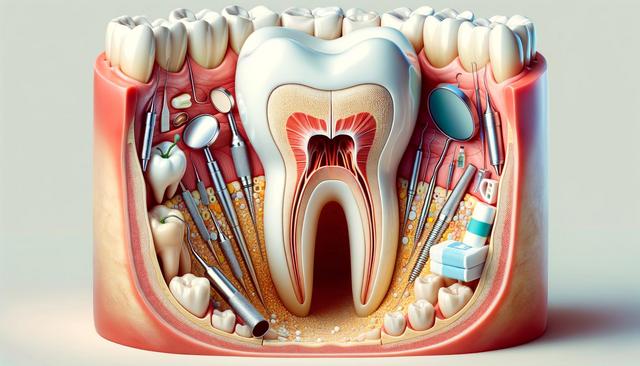Understanding the Basics of Root Canal Treatment
A root canal is a dental procedure designed to treat infection or damage within the pulp of a tooth. When decay or trauma reaches the inner chamber of a tooth, the pulp—consisting of nerves and blood vessels—can become inflamed or infected. If left untreated, this can result in severe pain, swelling, or even tooth loss. Root Canal Treatment aims to preserve the natural tooth by removing the infected pulp, cleaning the interior canals, and sealing the space to prevent further issues. This approach not only alleviates discomfort but also helps maintain the structural integrity of the tooth, reducing the need for extraction or dental implants.
Many people associate the term ‘Root Canal’ with pain, but in reality, the procedure itself is performed under local anesthesia and is relatively comfortable. Technological advancements in dental tools and techniques have significantly enhanced the accuracy, efficiency, and patient experience of Root Canal procedures. It’s a commonly recommended solution for those experiencing symptoms such as prolonged tooth sensitivity, gum swelling, or discoloration of the tooth.
When Is a Root Canal Necessary?
There are several signs that may indicate a need for Root Canal Treatment. While only a dentist can confirm the diagnosis, recognizing the symptoms early can lead to faster intervention and better outcomes. Here are some common indicators:
- Persistent or severe tooth pain
- Sensitivity to hot or cold temperatures that lingers
- Swollen or tender gums near the affected tooth
- Darkening or discoloration of the tooth
- Pimple-like bumps on the gums (abscess)
These symptoms typically suggest that the pulp inside the tooth is damaged or infected. In such cases, a Root Canal can help prevent the spread of infection and preserve the natural tooth. Regular dental check-ups are essential for identifying potential issues early, even before symptoms become noticeable. If you live in a specific area, such as Root Canal{state}, local dental professionals can provide timely evaluations and personalized treatment plans.
The Step-by-Step Procedure of a Root Canal
The Root Canal process involves multiple steps, each designed to ensure the tooth is thoroughly cleaned and sealed to prevent reinfection. Here’s a breakdown of what you can typically expect:
- Diagnosis and imaging: X-rays are taken to assess the extent of the damage.
- Local anesthesia: The area around the tooth is numbed to minimize discomfort.
- Pulp removal: An opening is made in the tooth, and the infected pulp is carefully extracted.
- Cleaning and shaping: The inner canals are cleaned, disinfected, and shaped to receive the filling.
- Filling and sealing: A biocompatible material is used to fill the space, and the tooth is sealed.
The final step often involves placing a crown over the treated tooth to restore its shape, strength, and functionality. This crown helps protect the tooth from future damage and allows it to function like a normal, healthy tooth. Depending on the severity of the condition, the Root Canal procedure may be completed in one or two visits.
Recovery and Aftercare
Post-treatment care is crucial to ensure the success of a Root Canal. While some mild discomfort or sensitivity may persist for a few days, it is typically manageable with over-the-counter pain relievers. Dentists may also recommend avoiding chewing on the treated tooth until a permanent restoration, such as a crown, is placed.
Proper oral hygiene is key to long-term dental health. Here are a few tips for maintaining your restored tooth after Root Canal Treatment:
- Brush and floss regularly to prevent new decay
- Attend routine dental check-ups and cleanings
- Avoid hard or sticky foods that could damage the restoration
- Follow your dentist’s specific care instructions
With good care, a tooth that has undergone Root Canal Treatment can last many years, often for a lifetime. If you’re looking for ongoing care or follow-up treatments in your area, consider searching for professionals who specialize in Root Canal{state} for tailored support and maintenance.
Frequently Asked Questions About Root Canals
Many patients have questions about what to expect during and after a Root Canal. Addressing these concerns can help reduce anxiety and ensure informed decision-making. Some commonly asked questions include:
- Is a Root Canal painful? Thanks to modern anesthetics and techniques, the procedure is usually no more uncomfortable than getting a filling.
- How long does the treatment take? Most Root Canal procedures are completed in one or two visits, depending on the complexity.
- Can the tooth get infected again? While re-infection is rare, it can happen if the tooth isn’t properly sealed or if aftercare is neglected.
- Will I need additional dental work afterward? In most cases, a crown is recommended to protect the treated tooth and restore its normal function.
If you’re considering Root Canal Treatment or have been advised by your dentist to undergo the procedure, it’s important to weigh the benefits, understand the process, and seek professional guidance. Whether you’re located in Root Canal{state} or elsewhere, qualified dental providers can walk you through every step and ensure you’re comfortable with your treatment plan.
Conclusion: Preserving Your Smile with Confidence
Root Canal Treatment offers a reliable solution for saving a severely damaged or infected tooth. By removing the infected pulp and sealing the tooth, this procedure helps eliminate pain, restore function, and maintain your natural smile. Understanding each step of the Root Canal process, from diagnosis to aftercare, empowers you to make informed decisions about your oral health. If you’re experiencing symptoms or have concerns about your dental condition, don’t delay seeking professional advice. Whether you’re exploring options in Root Canal{state} or elsewhere, timely care can make all the difference in preserving your dental well-being.


Leave a Reply